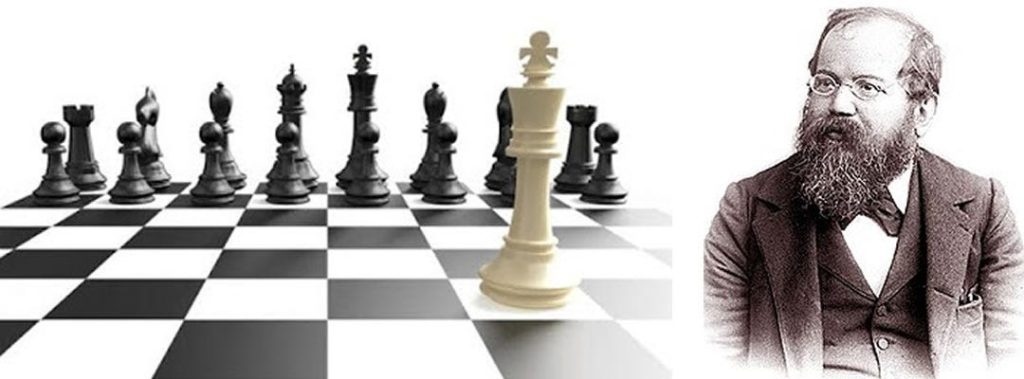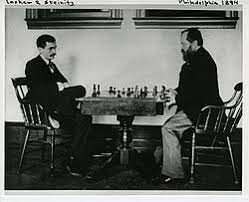
The fascinating and vibrant history of chess is unrivalled. One captivating moment fitting into these inspiring stories is the birth of the first World Chess Championship. This moment not only marks the beginning of a prestigious battle but also serves as a significant milestone in the fascinating history of chess. We learn more about the significance and place of this championship in history in relation to the game we know today.
The Beginning of Competitive Chess: Why the 1886 Match Mattered
The history of chess saw a pivotal change in 1886. For the first time, the world’s best players competed in a single official match to determine the best player in the world. Prior to this, chess as a sport did not have a champion. Players claimed victory and hailed themselves as champion, but there was no way to prove it. The 1886 match marked the beginning of competitive chess as a formalised event with structure and systematic organisation. It transformed chess from a hobby into a sport with significant national and international recognition.
Meet the Contenders: Wilhelm Steinitz vs. Johannes Zukertort
The first championship battle pitted two icons against each other, each possessing skills in distinctly different domains.
Wilhelm Steinitz
Born in Prague, had gained an excellent reputation for careful and systematic play, which was deeply thought-out.
Regarded as ‘the father of positional chess’ because he utilised the entire board and preferred strategically controlling areas ahead of time.
Possessed remarkable unbeaten records spanning decades; garnered respect due to his conservative approach.
Johannes Zukertort
Originally from Poland, I relocated to London at a young age.
Enjoyed fame for his fast, bold, and sometimes reckless, offensive manoeuvres and nimble thinking.
He also worked as an editor, doctor, and quite a witty author, but we all know him best for his flamboyant style and creative ingenuity.
They are remembered for their intense competition. Each was thought of as the proponent of different schools of chess: Steinitz favoured structured methodical play, while Zukertort preferred quick and audacious moves.
How the 1886 Championship Was Played: Format, Time, and Pressure?
The unique aspects of the 1886 championship match are as follows:
Geographical Reach: To maximise public interest, the match was held in New York, St. Louis, and New Orleans.
Structure:
The first player to achieve 10 victories would be the champion. Draws would have no impact on the score. If both players reached nine victories, the match would end without a champion being declared. Time: The entire match bracket spanned from January to March, placing strict limits on break periods and rest.
Mental Load: Both players faced Steinitz’s fatigue. At first, Zukertort was in the lead. Still, as the match progressed, his ability to dominate with aggressive strategies was countered by Steinitz’s calm, patient approach, resulting in a shift in the game’s dynamic.
What Made Steinitz’s Victory Revolutionary for Chess Strategy?
In earlier periods, players always attempted swift checkmates with furious assaults, but this was not the case for Steinitz. His breakthrough in 1886 demonstrated that:
It is not necessary to mount constant attacks in order to emerge victorious.
A combination of composure, strong positional control, and foresight works wonders.
Offence is not the only strategy that can yield results; Defense can do just as much.
His ideas catalysed a future shift in focus toward control, planning, and precise reasoning, rather than over-the-top manoeuvres. Steinitz demonstrated through his victory the importance of patience and strategy, turning modern chess into what it is today.
How the First Championship Influenced Generations of Grandmasters?
The 1886 match had effects that went beyond the participants to the rest of the globe. This match saw to it that:
There was an Official World Champion title that young aspiring players wished to attain.
Match and tournament regulations were just and rational.
Players from all corners of the globe would delve into Steinitz’s works, appreciating his mastery of strategic thinking.
Steinitz’s influence can be seen in future Grandmasters such as Emanuel Lasker, José Raúl Capablanca, and Bobby Fischer, all of whom are World Champions. They incorporated his concepts into their training and play, and built careers by refining his theories—even some went as far as disregarding his style, while most appreciated his logical approach and methodical strategy.
Legacy of the First Champion: Steinitz’s Impact on Modern Chess
Wilhelm Steinitz’s contribution goes beyond holding a title—he ignited a revolution.
The groundwork of modern opening strategies and positional play can be traced back to Steinitz.
Today, millions of hobbyists and professionals engage in his meticulously calculated games, seeking insights into the art of solid, logical moves.
Strategic patience paired with keen foresight is a hallmark of the style employed by chess players today, including the world’s top grandmasters.
Steinitz summarised his philosophy, saying, “The king is a fighting piece,” highlighting that a king’s role in chess is aggressive.
As a student or a grandmaster, one cannot ignore the teachings of the father of modern chess pertaining to calm, calculated play.
Conclusion
The 1886 World Chess Championship fundamentally transformed the game by introducing a competitive structure that allowed players to aspire to greatness. In that year, Wilhelm Steinitz earned the athletic title of the first world chess champion and became an enduring symbol for countless individuals. To begin your training and join this rich legacy, take that initial step with us at Kingdom of Chess. Are you prepared for your chess expedition? Claim a complimentary demo class and strategise your way to discovery.
FAQs
Why was the 1886 match so important?
This was the first officially recognised world championship match in chess history; it established rules and regulations, transforming chess into a sport with a significant award for competition.
Did Steinitz and Zukertort have very different styles?
They were absolutely distinct. Zukertort was known for bold, risky manoeuvres, while Steinitz practised careful strategy and deliberate planning.
How did Steinitz’s win change chess?
His calm, defensive strategy and long-term vision dominated the prevailing aggressive approach, proving the effectiveness of his strategy in chess.
Has Steinitz’s style lasted in modern chess?
Of course. Top-level contemporary chess players still rely on the principles and strategies he introduced.
How long did Steinitz stay champion?
He inspired everyone who came after him, holding the title for eight years.
Look through the numerous historic details and game records of the 1886 World Chess Championship.






